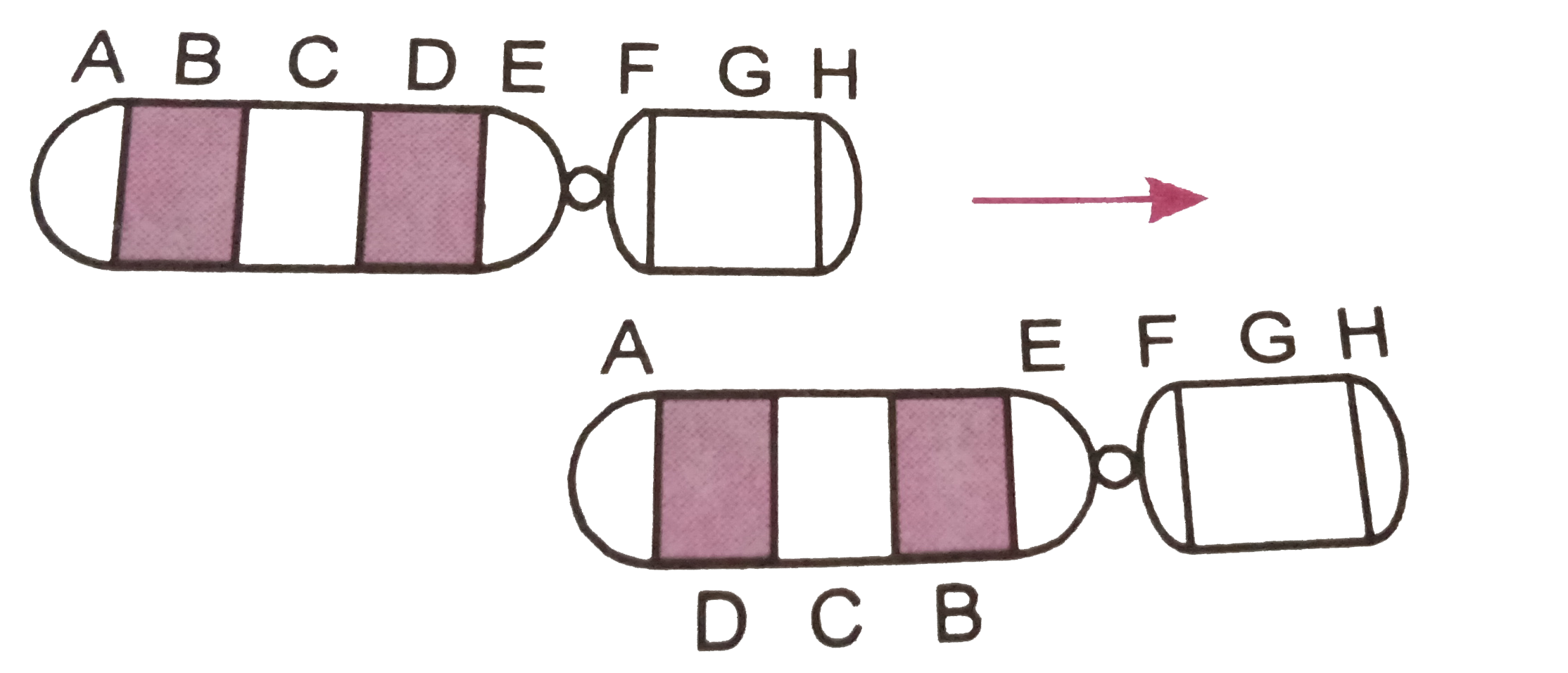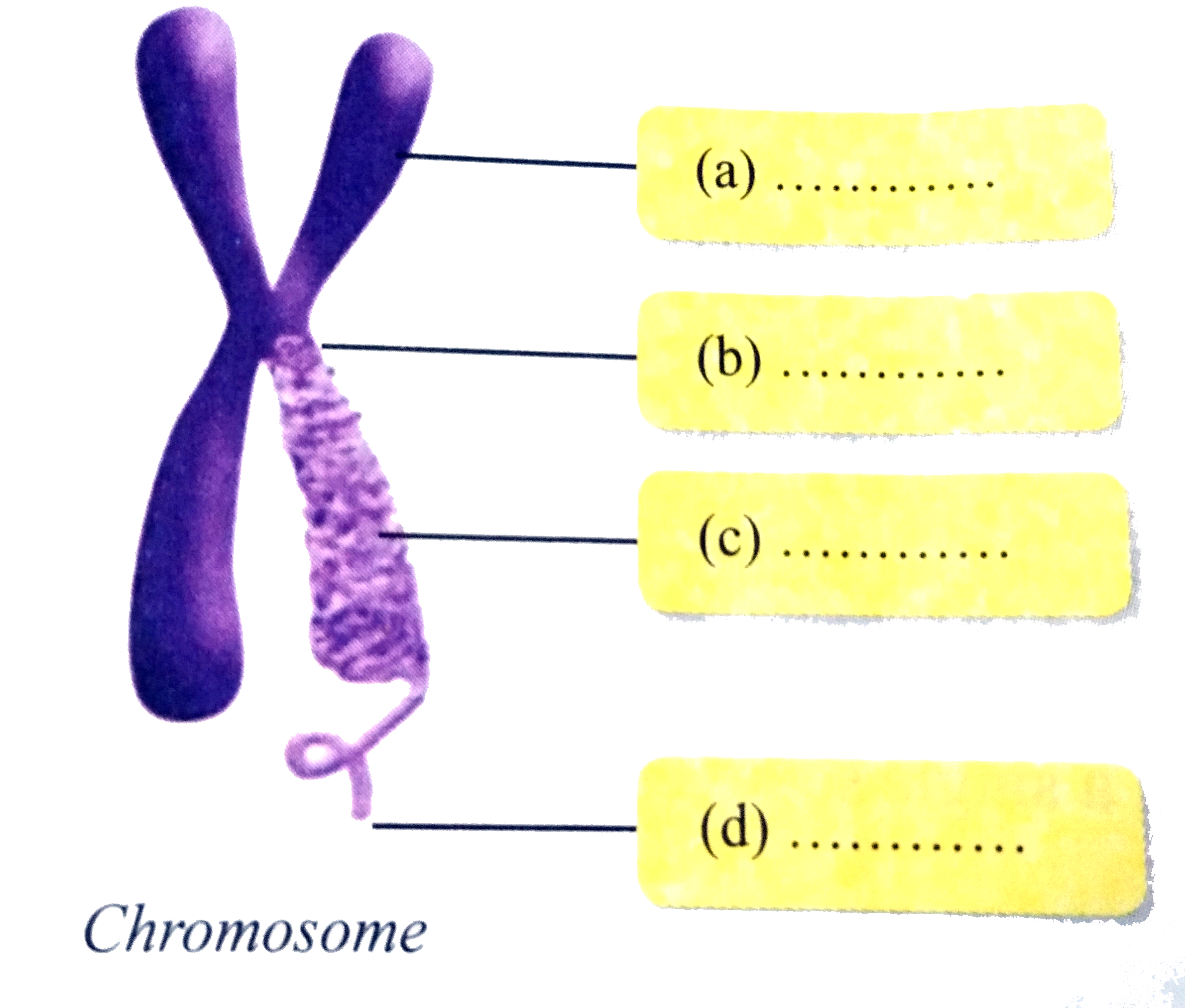What is numerical chromosomal mutation?Give its three genetic disorder?
Step-by-Step Solution
1. Definition of Numerical Chromosomal Mutation:
- Numerical chromosomal mutation refers to a change in the number of chromosomes in an organism. This can involve either an increase or a decrease in the normal chromosome number.
2. Types of Numerical Chromosomal Mutations:
- There are two main types of numerical chromosomal mutations:
- Aneuploidy: This occurs when there is an addition or loss of one or more chromosomes. For example, if a person has an extra chromosome, it is referred to as trisomy (2n + 1), while a missing chromosome is referred to as monosomy (2n - 1).
- Polyploidy: This occurs when there is an entire extra set of chromosomes. For instance, instead of the normal diploid (2n) state, an organism may have triploid (3n) or tetraploid (4n) conditions.
3. Examples of Genetic Disorders Caused by Numerical Chromosomal Mutations:
- Down Syndrome: This is caused by trisomy of chromosome 21 (2n + 1). Individuals with Down syndrome may exhibit developmental delays, characteristic facial features, and other health issues.
- Turner Syndrome: This condition is a result of monosomy, specifically the absence of one X chromosome in females (2n - 1 = 45 chromosomes). Affected individuals may experience infertility and underdeveloped secondary sexual characteristics.
- Klinefelter Syndrome: This disorder occurs due to the presence of an extra X chromosome in males (XXY condition). Individuals may show some female physical traits, such as gynecomastia, and typically have reduced fertility.
Summary
Numerical chromosomal mutations involve changes in the number of chromosomes, leading to various genetic disorders such as Down syndrome, Turner syndrome, and Klinefelter syndrome.
---
- Numerical chromosomal mutation refers to a change in the number of chromosomes in an organism. This can involve either an increase or a decrease in the normal chromosome number.
- There are two main types of numerical chromosomal mutations:
- Aneuploidy: This occurs when there is an addition or loss of one or more chromosomes. For example, if a person has an extra chromosome, it is referred to as trisomy (2n + 1), while a missing chromosome is referred to as monosomy (2n - 1).
- Polyploidy: This occurs when there is an entire extra set of chromosomes. For instance, instead of the normal diploid (2n) state, an organism may have triploid (3n) or tetraploid (4n) conditions.
- Down Syndrome: This is caused by trisomy of chromosome 21 (2n + 1). Individuals with Down syndrome may exhibit developmental delays, characteristic facial features, and other health issues.
- Turner Syndrome: This condition is a result of monosomy, specifically the absence of one X chromosome in females (2n - 1 = 45 chromosomes). Affected individuals may experience infertility and underdeveloped secondary sexual characteristics.
- Klinefelter Syndrome: This disorder occurs due to the presence of an extra X chromosome in males (XXY condition). Individuals may show some female physical traits, such as gynecomastia, and typically have reduced fertility.
Numerical chromosomal mutations involve changes in the number of chromosomes, leading to various genetic disorders such as Down syndrome, Turner syndrome, and Klinefelter syndrome.
Topper's Solved these Questions
- PRINCIPLES OF INHERITANCE AND VARIATIONBOOK - MODERN PUBLICATIONCHAPTER - PRINCIPLES OF INHERITANCE AND VARIATIONEXERCISE - REVISION EXERCISES (SHORT ANSWER TYPE-II QUESTIONS (B. QUESTIONS FROM CBSE EXAMINATIONS)
18 Videos
- PRINCIPLES OF INHERITANCE AND VARIATIONBOOK - MODERN PUBLICATIONCHAPTER - PRINCIPLES OF INHERITANCE AND VARIATIONEXERCISE - REVISION EXERCISES (LONG ANSWER TYPE QUESTIONS(A.QUESTIONS FROM STATE BOARD EXAMINATIONS:))
38 Videos
- PRINCIPLES OF INHERITANCE AND VARIATIONBOOK - MODERN PUBLICATIONCHAPTER - PRINCIPLES OF INHERITANCE AND VARIATIONEXERCISE - REVISION EXERCISES (SHORT ANSWER TYPE-I(B. QUESTIONS FROM CBSE EXAMINATIONS))
17 Videos
- ORGANISMS AND POPULATIONS BOOK - MODERN PUBLICATIONCHAPTER - ORGANISMS AND POPULATIONS EXERCISE - Chapter Practice Test (Section - E)
2 Videos
- REPRODUCTION IN ORGANISMSBOOK - MODERN PUBLICATIONCHAPTER - REPRODUCTION IN ORGANISMSEXERCISE - CHAPTER PRACTICE TEST (SECTION - C)
3 Videos
Similar Questions
Knowledge Check
Phenylketonuria is a genetic disorder of :
AX-linkedBTrisomic conditionCMonosomic conditionDAutosomal recessive geneGiven in the figure is chromosomal mutation It is
 ADuplicationBInversionCDeletionDReciprocal translocation
ADuplicationBInversionCDeletionDReciprocal translocationHaemophilia is a genetic disorder in which
Ablood clots in blood vesselsBThere is delayed coagulation of bloodCBlood fails to coagulateDBlood cell count falls

